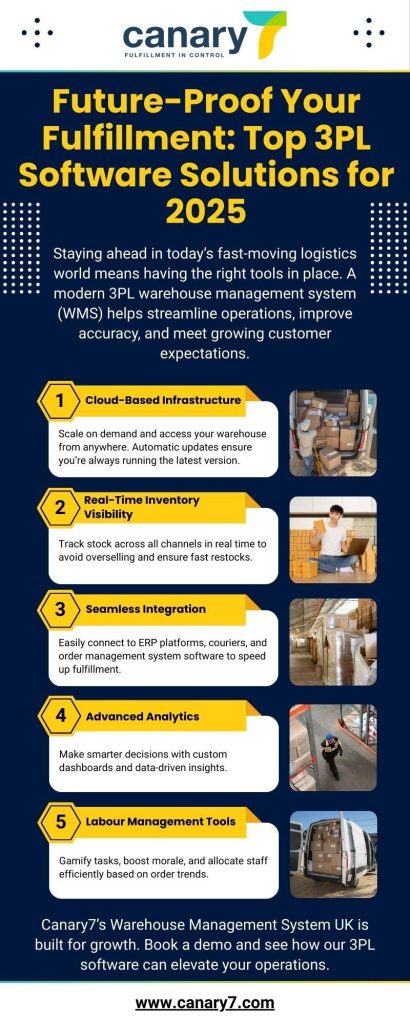In 2025, global ecommerce retail sales are expected to exceed $7 trillion (source: Statista). This staggering figure highlights just how fiercely competitive the logistics and fulfillment sector has become. Businesses are under immense pressure to ship products faster, optimize stock levels, and meet ever-rising customer expectations. If you fail to adapt, you risk losing market share to more agile competitors.
In this blog post, we’ll explore essential elements of a modern 3PL warehouse management system, from cloud-based infrastructures to gamified workforce engagement, so you can invest in a platform that positions your business for longevity and growth.
Table of Contents:
1. Why You Need a Future-Proof 3PL Warehouse Management System
2. 5 Worrying Signs You’re Stuck with an Outdated 3PL Warehouse Management System
3. Top Future-Proof Solutions for a 3PL Warehouse Management System in 2025-26
4. Key Questions to Ask a 3PL WMS Provider
5. Conclusion: Be Future-Ready Today with Advanced Canary7 WMS
6. FAQs
Why You Need a Future-Proof 3PL Warehouse Management System
a) Evolving Customer Expectations
Next-day or even same-day deliveries, real-time shipment tracking, and painless returns are quickly becoming the norm. A state-of-the-art 3PL Warehouse Management solution ensures you can keep up.
b) Scalability and Automation
As order volumes increase, your system should seamlessly adapt, whether you are managing B2B or D2C channels. Automation features within a 3PL Warehouse Management System ensure efficiency while reducing manual errors.
c) Risks of Outdated Systems
Relying on outdated 3PL software or clunky processes can result in stock imbalances, shipping delays, and unsatisfactory customer experiences. All of these slip-ups hurt your reputation and your bottom line.
5 Worrying Signs You’re Stuck with an Outdated 3PL Warehouse Management System
1. Frequent Stockouts and Overstocking
An unreliable Inventory Management System can cost you sales when items run out and waste money on unsold surplus.
2. Lack of Visibility
Without real-time data, spotting trends or identifying bottlenecks becomes guesswork, often leading to costly missteps.
3. Slow Order Fulfillment
When your system doesn’t sync with order management system software, fulfilling orders gets bogged down with manual tasks, increasing shipping times.
4. Limited Scalability
Surges in demand or seasonal sales can overwhelm a rigid 3PL Warehouse Management platform, slowing operations when you can least afford it.
5. High Manual Workload
Spreadsheet-based or offline tools are prone to human error and delay, especially when your business starts to grow.



